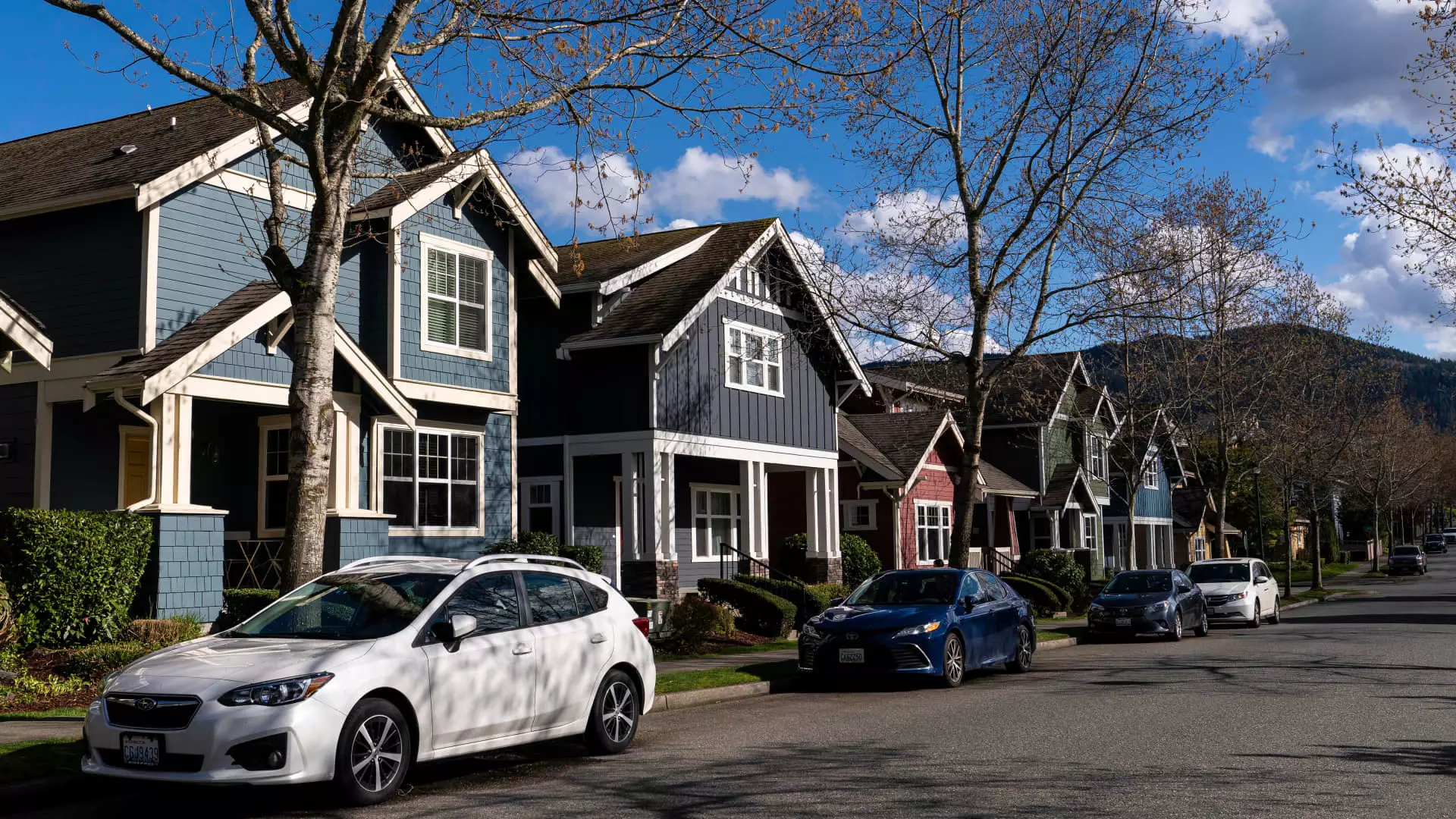The real estate market is facing a significant challenge as sales of previously owned homes hit a 30-year low. In May, existing home sales were virtually unchanged, dropping by 0.7% from April to a seasonally adjusted rate of 4.11 million units. This trend represents a 2.8% decrease compared to the same period last year. The slow pace of sales can be attributed to soaring prices and persistently high mortgage rates, which are deterring potential buyers from entering the market.
One major factor influencing the sluggish sales pace is the spike in mortgage rates that occurred in April. The average rate for a 30-year fixed loan climbed from below 7% to over 7.5% before moderating slightly in May. Currently, the rate stands at around 7%, making it difficult for buyers to afford homes. Lawrence Yun, chief economist at the National Association of Realtors (NAR), expressed surprise at the lack of recovery in home sales, emphasizing the need for a more favorable market environment to stimulate demand.
While sales remained flat in most regions, the South experienced a 1.6% decline in May. A significant development during this period was the substantial increase in housing inventory, which rose by 6.7% month-over-month and by 18.5% compared to the previous year. Despite this uptick, the supply of homes for sale remains limited, with just a 3.7-month inventory at the current sales pace. Yun believes that the additional housing supply will eventually lead to higher sales volumes and moderate price increases in the coming months.
The relentless demand for housing continues to push prices upward, with the median price of an existing home reaching a record high of $419,300 in May. This figure represents a 5.8% year-over-year increase, marking the strongest gain since October 2022. Prices surged across all regions, reflecting the growing disparity between home values and buyers’ purchasing power. The rising cost of homeownership is evident in the fact that the mortgage payment for a typical home has more than doubled in the last five years, driven by both higher interest rates and inflated property prices.
The sales data also reveals a notable trend in market segmentation, with homes priced above $250,000 experiencing stronger demand compared to lower-priced properties. Sales of homes priced between $750,000 and $1 million surged by 13%, while properties priced over $1 million saw a significant 23% increase. Cash transactions accounted for 28% of sales, indicating ongoing interest from investors and affluent buyers. However, first-time buyers represented 31% of sales, showing resilience in a challenging market environment.
Despite the current challenges, the real estate market shows signs of resilience, with two-thirds of homes going under contract within a month of listing. Competition remains fierce, particularly for well-priced properties that require minimal repairs. However, an increasing number of listings are languishing on the market, signaling a potential shift in buyer behavior. As the market continues to evolve, industry stakeholders must adapt to changing dynamics and consumer preferences to navigate the uncertainties ahead.

